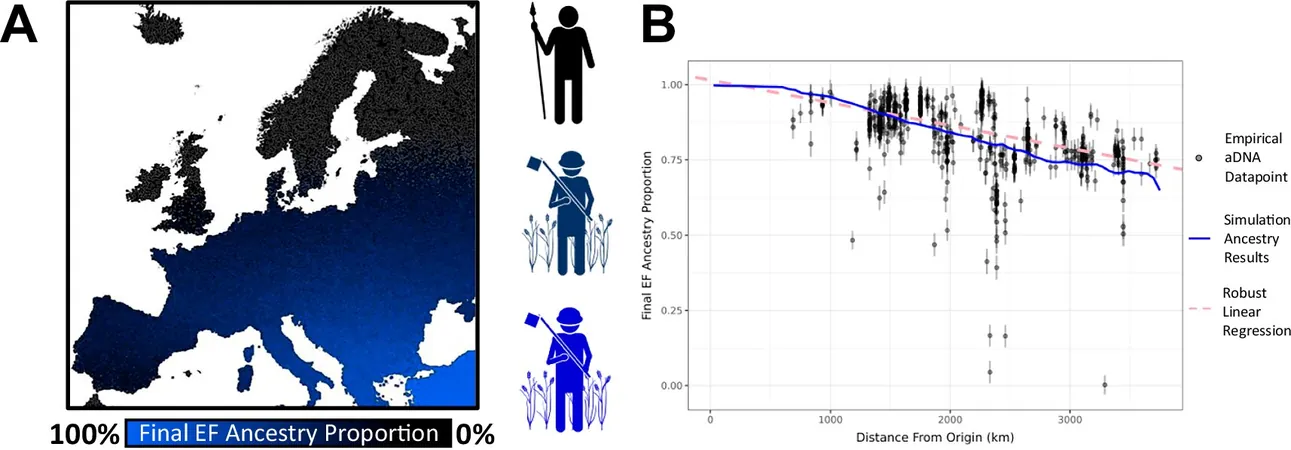
Revolutionizing Image Generation: How Tokenizers Could Replace Generators
2025-07-22
Author: Noah
The Future of AI Image Generation
The landscape of AI image generation is set for a dramatic transformation, with projections indicating it could reach a staggering billion-dollar industry by the end of this decade. Imagine crafting a whimsical scene—like a friend waving a flag on Mars or daringly navigating a black hole—in mere seconds! However, achieving this level of creativity with today's technology typically demands weeks of training on extensive datasets and immense computational power.
A Groundbreaking Discovery at ICML 2025
What if we told you that generating images could happen without traditional generators? A remarkable research paper introduced at the International Conference on Machine Learning (ICML 2025) in Vancouver unveils shocking capabilities using just tokenizers and decoders to manipulate images.
This innovative study, authored by a team from MIT and Facebook AI Research, began in a graduate seminar and evolved into serious research, revealing possibilities beyond simple academic exercises.
What are 1D Tokenizers?
The research centers around a concept called a one-dimensional tokenizer—a neural network capable of encoding a 256x256 pixel image into a mere 32 tokens. Unlike traditional tokenizers that fragmented images into 16x16 sections, this new method uses far fewer tokens to encapsulate information about the entire image, allowing for exceptional data compression.
Revolutionary Image Manipulation Techniques
This groundbreaking research has opened doors to a previously unseen realm of image manipulation. By substituting certain tokens, researchers discovered they could drastically enhance image quality, tweak brightness, or shift poses. For instance, transforming a robin's head position became a simple switch, showcasing the immense potential for creative edits without conventional tools.
No Generators Needed: The Magic of Detokenization
But here’s the jaw-dropper: the MIT team effectively generated images without the aid of a traditional generator. By employing a 1D tokenizer alongside a detokenizer (or decoder), they reconstructed images purely from a string of tokens. Using an existing neural network known as CLIP, they created visuals from scratch—or changed existing images completely.
The Potential for Cost Reduction and Broader Applications
This innovative approach not only simplifies the process of image manipulation but could significantly slash computational costs. Experts believe that the implications stretch far beyond computer vision; they envision applying tokenization to robotics or self-driving technologies, where actions could be encoded similarly.
Unlocking New Frontiers in AI Technology
The possibilities seem endless as researchers like Lukas Lao Beyer and his team continue to explore the incredible power of 1D tokenizers. The ability to compress data at such an extreme level could pave the way for revolutionary applications across various fields, including traffic management for autonomous vehicles.
As the AI field advances, the implications of this groundbreaking research could redefine not just image generation, but the entire landscape of data processing in technology.









 Brasil (PT)
Brasil (PT)
 Canada (EN)
Canada (EN)
 Chile (ES)
Chile (ES)
 Česko (CS)
Česko (CS)
 대한민국 (KO)
대한민국 (KO)
 España (ES)
España (ES)
 France (FR)
France (FR)
 Hong Kong (EN)
Hong Kong (EN)
 Italia (IT)
Italia (IT)
 日本 (JA)
日本 (JA)
 Magyarország (HU)
Magyarország (HU)
 Norge (NO)
Norge (NO)
 Polska (PL)
Polska (PL)
 Schweiz (DE)
Schweiz (DE)
 Singapore (EN)
Singapore (EN)
 Sverige (SV)
Sverige (SV)
 Suomi (FI)
Suomi (FI)
 Türkiye (TR)
Türkiye (TR)
 الإمارات العربية المتحدة (AR)
الإمارات العربية المتحدة (AR)